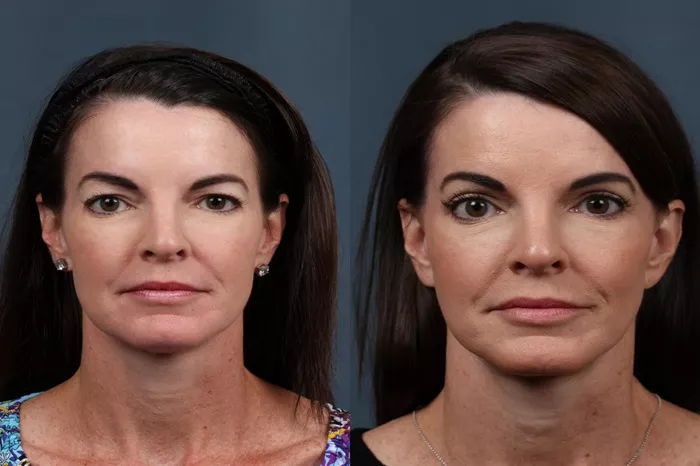In the realm of cosmetic surgery, facelifts have long been regarded as a popular and effective means to reverse signs of aging and rejuvenate one’s appearance. However, timing is crucial when considering such procedures. While some individuals may seek facelifts at a relatively young age to address genetic predispositions or early signs of aging, others may wait until later in life when wrinkles and sagging become more pronounced. In this article, we delve into the optimal ages for facelifts, considering various factors such as skin elasticity, lifestyle, and aesthetic goals.
1. Late 30s to Early 40s: Proactive Prevention
Increasingly, individuals in their late 30s and early 40s are turning to cosmetic procedures to maintain their youthful appearance. This age range is ideal for what is commonly referred to as “preventative aging.” While significant facial aging may not yet be apparent, subtle changes such as fine lines, loss of volume, and early jowling may start to emerge.
During this stage, a mini facelift or non-surgical options like injectables and laser treatments can yield impressive results. These procedures can address minor sagging and restore facial contours without the need for extensive surgery. By taking proactive measures at this age, individuals can slow down the aging process and enjoy long-lasting results.
2. Mid to Late 40s: Early Intervention
As individuals reach their mid to late 40s, the effects of aging become more noticeable. Skin laxity increases, wrinkles deepen, and facial volume diminishes. This age range marks an opportune time for those seeking more comprehensive facial rejuvenation.
A traditional facelift performed in the late 40s can effectively address moderate to severe signs of aging. By tightening underlying muscles, removing excess skin, and repositioning facial fat, a facelift can restore a more youthful and refreshed appearance. Combining a facelift with complementary procedures such as eyelid surgery or a neck lift can enhance overall results and ensure harmonious facial rejuvenation.
3. Early 50s: Prime Time for Facelifts
In their early 50s, many individuals experience a significant decline in skin elasticity and facial muscle tone. This age range represents a prime opportunity for undergoing a facelift, as the aging process has progressed enough to warrant more extensive intervention.
A facelift performed in the early 50s can address a wide range of concerns, including sagging jowls, deepening nasolabial folds, and loose neck skin. By undergoing surgery at this stage, patients can achieve dramatic yet natural-looking results that can last for years to come. It’s essential to consult with a board-certified plastic surgeon who can tailor the procedure to meet the individual’s specific needs and desired outcomes.
See also: What is the best age to get lasik?
4. Late 50s to Early 60s: Refinement and Maintenance
Individuals in their late 50s and early 60s may seek a facelift to refine previous results or address new signs of aging that have emerged over time. While some may opt for a second facelift to maintain their youthful appearance, others may undergo complementary procedures to enhance facial harmony.
During this stage, procedures such as fat transfer, laser resurfacing, or injectables can complement the results of a facelift. These adjunctive treatments can address fine lines, volume loss, and skin texture irregularities, ensuring a comprehensive approach to facial rejuvenation. Additionally, adopting a diligent skincare routine and practicing sun protection can prolong the longevity of facelift results and promote overall skin health.
5. 60s and Beyond: Tailored Rejuvenation
In their 60s and beyond, individuals may continue to pursue facial rejuvenation to address ongoing signs of aging and maintain a vibrant appearance. While the aging process inevitably continues, advancements in surgical techniques and skincare products offer promising options for achieving natural-looking results.
At this stage, a facelift combined with other procedures such as brow lift, eyelid surgery, or skin tightening treatments can address multiple facial concerns simultaneously. By customizing the treatment plan to suit the individual’s unique anatomy and aesthetic goals, plastic surgeons can help patients achieve a refreshed and rejuvenated appearance that reflects their inner vitality.
Conclusion
Determining the optimal age for a facelift depends on various factors, including the individual’s unique anatomy, lifestyle, and aesthetic preferences. While there is no one-size-fits-all approach, consulting with a board-certified plastic surgeon can provide invaluable insight into the most suitable timing and treatment options. Whether seeking preventative measures in their 30s or comprehensive rejuvenation in their 60s, individuals can achieve transformative results through personalized facial surgery and skincare interventions. By embracing the journey of aging with grace and confidence, individuals can enjoy a lifetime of timeless beauty.
Related topics:
What is the best age for facelift: A Comprehensive Guide
When is the Best Age to Get Rhinoplasty? All You Need to Know!
How To Get Swelling Down After Rhinoplasty?

